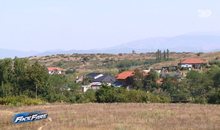
 Flash News
Flash News
The minimum wage increased in all countries of the Region in 2025, in Albania it still remains the lowest

Countries in the Region have continued to experience strong wage growth even though labor productivity is no longer keeping up.
Bosnia and Herzegovina had the largest wage-productivity gap, while Serbia had the lowest, as wage growth was accompanied by a similar productivity increase of 7 percent, according to a recent World Bank analysis in the latest economic report for the 6 Western Balkan countries.
As of January 2025, the largest increase in the minimum wage in the region was observed in the Federation of Bosnia and Herzegovina (FBiH), where the minimum wage increased by 60 percent to 892.3 euros.
In Republika Srpska, the minimum wage reached 1,023.5 euros from around 687.4 euros previously, regardless of the educational level of employees.
As part of regular indexation, minimum wages in Serbia and North Macedonia increased by 13.2 and 8.1 percent, respectively, for 2025. The highest minimum wage in the region remains in Montenegro after last year's increase, which also differentiates employees based on their level of education.
Meanwhile, the minimum wage in Albania remained unchanged at around 404 euros, while Kosovo's minimum wage, at 350 euros, is far ahead of the region.
Serbia recorded the highest average real wage growth in 2024, at 9.1 percent, followed by North Macedonia, at 9.0 percent. Albania, and Bosnia and Herzegovina recorded an average real wage growth of around 8 percent, while Montenegro followed with an increase of 6.9 percent.
Wage growth was at least double the productivity growth in most economies in the Region.
The World Bank suggests that the six Western Balkan countries can boost their prospects by accelerating the implementation of structural reforms. The countries continue to face significant challenges, such as low labor market participation, high levels of informality, and slow productivity growth.
These issues hinder economic progress and limit the potential for sustainable development.
Developing the domestic private sector is essential for generating employment opportunities and fostering innovation, which are essential for long-term growth.
Despite progress in reducing unemployment over the last decade, the region still faces significant structural challenges. In 2024, unemployment averaged 10.1 percent, with notable variations across countries (ranging from 8.6 percent in Albania and Serbia, to 12.6 percent in Bosnia and Herzegovina.
Youth employment remains a critical concern, with an average unemployment rate of 25 percent, while female labor force participation is only 45 percent, compared to 64.2 percent for men. Inactivity averages 45.4 percent of the working-age population.
High levels of informality and the outmigration of skilled workers further limit growth prospects.
Meanwhile, increasing weather hazards, such as extreme heat, drought, flooding, and changing rainfall patterns, further reduce worker productivity, increase occupational health risks, damage productive assets, and disrupt key economic sectors that depend on stable weather conditions, such as agriculture, construction, and tourism./Monitor
Latest news


Fiscal peace, but at a cost
2025-07-05 18:00:10
'Bankers' tax evasion, Chinese CEO and former director jailed
2025-07-05 17:39:21
Kyle Walker joins English club on two-year deal
2025-07-05 17:20:24
Two cars collide on the Saranda-Delvina axis, 4 injured
2025-07-05 17:05:29
Touching gesture! Liverpool will pay Jota's family's salary until 2027
2025-07-05 16:45:18
The zodiac signs that cheat most often
2025-07-05 16:25:53

"I asked for the dismissals", Dredha tries to soften Rama's 'blow' in Vlora
2025-07-05 15:48:49
Bomb threat in Parliament, prosecutor: It was a lie
2025-07-05 15:22:28

Bardhi: The recount revealed how greedy Zeqine Balluku is in stealing
2025-07-05 14:44:29
Knife wound on the secondary road Tirana-Durrës, perpetrator sought
2025-07-05 14:37:54
Tears and pain, Diogo Jota is escorted to his final home
2025-07-05 14:21:34
Success starts with yourself! Simple ways to invest in personal development
2025-07-05 13:58:50
Unlicensed firearms found in apartment, 50-year-old arrested in Lushnje
2025-07-05 13:43:11

Tirana Court remands Skerdi Sina to prison
2025-07-05 12:59:34
Cocaine laboratory in Greece, here are the Albanians arrested and wanted
2025-07-05 12:40:16
Directed Justice/Vangjeli: SPAK does not investigate any scandal involving Rama
2025-07-05 12:22:03

Bomb alert, Police remove MPs and media from Kosovo Parliament building
2025-07-05 11:48:16
"The will of the people" and the irony of ordered resignations
2025-07-05 11:32:05
Summer drowning risk: How to enjoy the water without risking your life
2025-07-05 11:20:27
Fire situation in the country, 16 fires reported in 24 hours, 4 still active
2025-07-05 11:07:04
Car hits pedestrian at white lines, injured in serious condition in Vlora
2025-07-05 10:59:58
Mosquito-borne diseases are a growing problem in Europe
2025-07-05 10:44:13



One of Sweden's most dangerous and wanted criminals arrested in Turkey
2025-07-05 09:38:29
Foreign exchange/ How much foreign currencies are bought and sold today
2025-07-05 09:18:38

"Don't be influenced by the opinions of others", today's horoscope
2025-07-05 08:40:50

Morning Post/ In 2 lines: What mattered yesterday in Albania
2025-07-05 08:02:07

Trump says he's ready to raise tariffs to 70% on some countries
2025-07-04 22:35:52
Tre shenjat e zodiakut që do ‘pasurohen’ në Korrik
2025-07-04 22:05:09
Gaza War: Hamas Accepts US Proposal for 60-Day Ceasefire
2025-07-04 21:50:10
Autocracy in Albania, Fuga: Governance has gotten out of control
2025-07-04 21:40:51
Meta: Agriculture on credit, the new fraud!
2025-07-04 21:26:39




Vote recount in Durrës ends without changes
2025-07-04 20:12:54
Gas station explodes in Rome, 25 injured (VIDEO)
2025-07-04 20:00:20

These afternoon habits often sabotage weight loss
2025-07-04 19:39:28
Former Arsenal player Thomas Partey accused of rape
2025-07-04 19:24:21
Shepherd disappears without a trace in Delvina
2025-07-04 19:14:31

Bardho gave Zegjine's mandate/Braho: Unfair! It violates the electoral system
2025-07-04 19:01:08


Rapid developments in the Sultanates!
2025-07-04 18:00:06



Italy tightens rules for skateboard traffic
2025-07-04 17:20:18

Unusual for the time, dense fog covers the coast of Vlora
2025-07-04 16:48:01


Accident on the Shkodra-Lezhë axis, one dead and 3 injured
2025-07-04 16:14:19
Albania with fewer requests for asylum and Albanian citizenship in 2024
2025-07-04 16:06:57

Albania last for quality of life, DP: Technical government is the solution!
2025-07-04 15:42:30
Nico Williams says "No" to Barcelona, signs with Athletic Club until 2035
2025-07-04 15:33:35
Fires in the country, four fires are still active, what is the situation?
2025-07-04 15:24:20

Summer brings big changes for these 4 zodiac signs
2025-07-04 15:00:04
Osmani: MPs need to agree to a secret ballot for the Speaker of Parliament
2025-07-04 14:51:09
Serious accident on the Peqin-Elbasan axis, two injured
2025-07-04 14:37:56

GJKKO leaves in force the security measure for the head of the KPP
2025-07-04 13:58:17
Who will replace Ilir Meta and take over the leadership of the PL?
2025-07-04 13:50:36
Berisha: Dismissal of directors in Vlora, another act of 'scapegoats'
2025-07-04 13:41:46




Librazhd/ In a serious psychological state, the young man consumes pesticides
2025-07-04 13:05:07


Weapons trafficked from Kosovo to Albania, two arrested, 8 pistols seized
2025-07-04 12:33:28
Konsumimi i tepërt i çokollatës, ja cilat janë dëmet që shkakton në organizëm
2025-07-04 12:23:35

Fires in the country, 21 fires in the last 24 hours, 4 still active
2025-07-04 12:00:19
WB calls for debt transparency: Albania to publish details of every loan
2025-07-04 11:50:05
Changes in the State Police, new names expected to lead 5 police stations
2025-07-04 11:40:06

The race for the head of the BKH, the third phase on July 11
2025-07-04 11:20:23

Toxic phrases that show your relationship is in trouble
2025-07-04 11:00:10

2 brothers arrested in Roskovec, cultivating narcotic plants
2025-07-04 10:38:08

